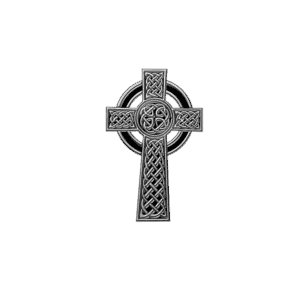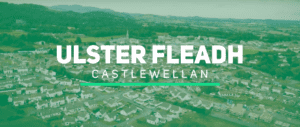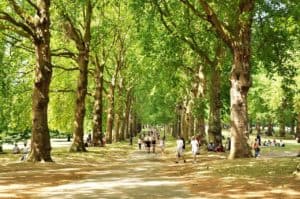Graffiti as a Voice of the People: Examining Political Murals from Belfast to Berlin

Updated On: March 30, 2024 by Yasmin Elwan
In the realm of public expression, graffiti has long stood as a brazen voice of the people, turning political walls into canvases that narrate the struggles, resilience, and hopes of communities. From the Belfast Peace Walls that chronicle Northern Ireland’s complex history to the remnants of the Berlin Wall, which once divided a nation, these sites have become emblematic of political speech. Graffiti on such walls offers a raw and uncensored account of societal issues, providing insights into the zeitgeist of the times.

Graffiti has the power to transform urban spaces from mere concrete to the chronicles of communal voice. It serves as a visual dialogue that reflects socio-political landscapes, capturing the attention of passersby and the world at large. Both celebrated and vilified, this art form evolves with the narratives it portrays, often leaving a lasting legacy in the form of cultural engagement and policy debates. Whether through colourful murals or poignant scribbles, the walls speak of local and global sentiments, narrating stories that might otherwise remain unheard.
Historical Context of Graffiti as Political Speech

In our exploration of graffiti as a form of political speech, we uncover its use as a tool for both expression and protest. These visual declarations become particularly prominent in areas fraught with conflict and division.
The Troubles and Graffiti in Northern Ireland
During the period known as The Troubles in Northern Ireland, graffiti emerged as a potent form of communication. Murals and slogans on walls across Belfast and Derry became synonymous with the political and religious divisions plaguing the area. It was not merely an act of vandalism but a way for individuals and groups to make bold statements in public spaces. These murals often depicted allegiance to either Nationalist or Unionist sentiments, serving not only as a reflection of the intense socio-political climate but also as a catalyst for dialogue and, unfortunately, sometimes violence.
The Berlin Wall: A Canvas for Protest
The Berlin Wall, a symbol of Cold War division, became one of the world’s largest canvases for protest. Graffiti on the West Berlin side of the Wall served as a visual fight against oppression and a beacon of hope for a world without division. Each stroke and colour represented a stand for freedom, with the Wall accumulating layers of political statements, artistry, and outcry until its eventual fall. The concrete barrier once meant to divide, transformed into a tapestry of calls for unity and a historical testament to the power of public expression in challenging times.
Analysis of Iconic Locations
In our exploration of graffiti as a potent form of expression, we turn our attention to the iconic murals and art installations that have become political emblems in their own right on the streets of Belfast and the remnants of the Berlin Wall.
Murals of Belfast’s Streets
Belfast, particularly along the Falls Road and Shankill Road, is renowned for its murals. These large-scale paintings are more than mere decorations; they are a visual record of Northern Ireland’s turbulent history and a testament to its ongoing political and religious divides. Murals on Falls Road often represent the nationalist perspective, with historical references to Irish mythology and memorials to hunger strikers. In contrast, the Shankill Road murals typically showcase loyalist sentiments, honouring the queen and country. Each mural speaks volumes, conveying messages of hope, unity, or defiance, depending on which part of the community boundary one stands.
Berlin Wall’s East Side Gallery
The East Side Gallery in Berlin is a historical landmark where the political narrative unfolds in the form of art. Once a symbol of division, the remnants of the Berlin Wall here have been transformed into one of the longest open-air galleries in the world. Artists from around the globe contributed to this monument, turning it into a canvas that reflects themes of freedom and reconciliation. The vivid and bold artwork serves as a reminder of the joy of Berlin’s liberation and the universal desire for liberty. As one walks along this gallery, it’s hard to shake off the overwhelming sense of history intertwined with hope for a brighter future.
Each of these iconic locations offers us a profound narrative through its public art, telling stories of conflict, ideology, and dreams woven into the very fabric of the communities they represent.
Graffiti, Street Art, and Public Perception
Street art has undergone a transformation in the eyes of the public, moving from its early perception as an act of vandalism to becoming a recognised form of public art that conveys community values and voices.
From Vandalism to Public Art
Initially viewed as a criminal activity, graffiti has reshaped its identity over the years. In areas like East Los Angeles, graffiti reflects the Mexican-American artistic influence, thereby embedding cultural history into urban landscapes. This transition from unsanctioned scribbles to culturally significant works illustrates a shift in perception that aligns graffiti with public art, providing a rich visual experience to all who encounter it.
In cities across the globe, from Belfast’s political murals to Berlin’s East Side Gallery, graffiti is no longer simply seen; it is experienced and often celebrated for its power to provoke thought and highlight social issues. Through community engagement and legal sanctuaries for street artists, public spaces have become canvases for dialogue, reflection, and connection.
Artists and Communities
Street artists, once operating in the shadows, are now collaborating with communities to create art that resonates with local identities and addresses societal themes. The narratives portrayed through these works grant a voice to often marginalised groups within society, effecting change and fostering a sense of community.
Artists like Banksy have sparked widespread discourse on political and social matters, influencing public perception and pushing boundaries on what art can be. Communities, in turn, have become protective of these visual statements. In various places, street art festivals and initiatives, such as those documented on platforms like www.connollycove.com, have been pivotal in reframing graffiti as a valuable component of the arts and culture sector. These pieces not only enhance the aesthetic of the environment but also imbue spaces with local character and history, reflecting the voices and stories of the people.
Socio-Political Impact of Graffiti
Graffiti has emerged as a powerful tool for expression, often reflecting the socio-political climate of an area. It can articulate communal identity and highlight the ongoing struggle between opposing ideologies.
Expressing Identity and Unity
In the context of Belfast, graffiti plays a significant role in expressing individual and community identities. Loyalist and Republican murals, for example, are more than just art; they are bold declarations of cultural and political loyalties. We see walls adorned with imagery that signifies unity within these communities, showcasing a collective voice in both public and political spheres.
Political Murals and Messages
The political murals found on the streets of Berlin depict the city’s tumultuous history while also advocating for a unified future. Messages emblazoned across these political canvases range from remembrances of past struggles to calls to action, echoing Nationalist sentiments and aspirations for societal change. These murals serve as perpetual reminders of the city’s journey and the intrinsic power of the populace to enact change.
The Physical and Symbolic Barriers
Graffiti speaks volumes about community sentiment, particularly when it adorns barriers that have deep political significance. Throughout history, walls have risen, demarcating territories and ideologies—some even becoming symbols in their own right. Below, we explore two stark reminders of such realities.
Peace Walls and Divisions in Belfast
In Belfast, the Peace Walls—stretching over 34 kilometres in length—stand as towering legacies of the Northern Ireland conflict. Initially erected to curb violence, these walls now are canvases that convey messages of hope and unity, as well as serve as stark reminders of divisions. The murals depict historical events and memorialise figures of the Troubles, transforming iron and brick into communal storytelling.
Remnants of Iron and Barbed Wire in Berlin
The Berlin Wall once sliced through the city’s heart, its concrete and barbed wire manifestations of ideological rifts. Even as fragments and memories persist, they remind us of a past when freedom was curtailed by walls and checkpoints. Its remaining sections, embraced by expressive graffiti, narrate stories of oppression and the human longing for unity that resonates worldwide.
Urban Spaces and Changing Narratives
Urban landscapes are ever-evolving tapestries, reflecting the dynamic interplay between society and space. As cities evolve, so do the narratives etched upon their walls, signalling shifts from political strife to cultural regeneration.
Regeneration and the Arts
The metamorphosis of urban environments often begins with art. Murals and graffiti transform neglected areas into canvases that express communal identity and history. For instance, Belfast’s murals narrate stories of political aspirations and social change, mirroring the city’s journey from conflict to creativity. Such spaces are not merely revitalised but re-envisioned, showing how regeneration can inspire a renaissance of culture and community.
Gentrification and Its Effects
However, the blooming of urban art can be a double-edged sword, marking the onset of gentrification. The cultural vibrancy that artists bring to neighbourhoods often attracts development, potentially leading to displacement and homogenisation. The graffiti-laden walls of Berlin, once a canvas for unfettered expression, now find themselves at the crossroads of commercial interest and preservationist movements, highlighting the transformative—but often contentious—effects of gentrification.
Tours and Cultural Engagement
Graffiti significantly contributes to urban culture and has the power to turn walls into canvases that voice societal issues. Recognising its potential, we’ve seen a surge in culturally immersive experiences that allow tourists to connect with the local community and its expressions.
Walking Tour Experiences
Walking tours offer an intimate exploration of a city’s graffiti scene, often led by knowledgeable guides who provide context and history behind the vibrant street art. In cities like Belfast, black taxi tours have become instrumental in enlightening visitors about the complex political history as experienced through the murals. The guides convey stories and sentiments that are not easily gleaned from books, making the experience both personal and profound.
Graffiti Art as Tourist Attractions
Once seen as vandalism, graffiti has evolved into a respected form of art and a compelling tourist attraction. In Berlin, sections of the Berlin Wall itself are covered in graffiti, symbolically representing the city’s tumultuous past and the voices of its people. This form of cultural engagement draws tourists who seek to understand the social and political commentary embedded in the art, further cementing graffiti as a pillar of the community’s identity.
Community Involvement and Policies
In examining graffiti from a political and communal perspective, we must consider the direct involvement of communities and the role of city councils. Their policies greatly influence the life span and significance of politically themed murals and tags on city walls.
Role of Belfast and Berlin City Councils
Belfast City Council has long grappled with the presence of political murals, recognising them as both historical markers and potential sources of contention. The Council works with community groups to evaluate the impact of such graffiti and, when necessary, to facilitate the creation of new artwork that reflects current sentiments and narratives. Conversely, Berlin’s integrated approach has embraced the rich tapestry of street art, acknowledging its role in capturing the city’s turbulent past and evolving identity.
Consensus on the Removal of Walls
The removal of political graffiti-laden walls in both cities requires mutual consent between the governing bodies and the communities. Policies are crafted to ensure that any action taken respects the will of the community, understands the historical context, and supports social cohesion.
- Belfast: Decisions about removing the walls are approached with sensitivity towards the city’s complex history and the collective memory of its people.
- Berlin: The city’s policies also seek consensus, often leading to the preservation of certain iconic segments of the Berlin Wall as a testament to its historical significance.
Our combined efforts ensure that these policies align with the pulse of the local population while honouring the memory and importance of these urban canvases.
Security Measures and Their Legacy

In this section, we examine the physical and psychological impact of security measures on societies that have been divided by political barriers. Specifically, we focus on the gates and checkpoints as well as the interplay between safety and mobility in such cities.
Gates and Checkpoints: Symbols of Control
Gates and checkpoints stand as stark symbols of segregation and control within divided cities. In Belfast, the peace gates erected during the Troubles were intended to curb violence by controlling the movement between Catholic and Protestant communities. Similarly, in Berlin, the checkpoints along the Berlin Wall served as both a means of security and an oppressive tool, limiting the freedom of East Berliners and becoming an enduring symbol of Cold War tensions.
Safety and Mobility in Divided Cities
The presence of these barriers has a dual nature. On one hand, they are seen as necessary for safety, aiming to reduce the fear and threat of violence. Berlin’s graffiti-covered Wall and the fortified peace lines of Belfast were both justified as security measures. On the other hand, they significantly restrict mobility, often perpetuating the division and police presence necessary to maintain the status quo. Despite this, in some cases, the opening of a peace gate can signal steps towards the healing process and the possibility of dismantling segregation.
Continued Relevance in Modern Context
Graffiti stands at the pivotal intersection of art and social discourse, continuing to be a powerful medium for activism and reflection on our collective journey from a history of violence to the aspiration for peace.
Art and Activism
At the heart of modern graffiti is the fusion between art and activism. We’ve seen street art transform into a global language for the voiceless, a canvas where the silenced find their voice. Not just a tool for defacing property but an expression of public sentiment, the political landscapes we tread are etched in vibrant colours and bold statements. Artists wield their spray cans as sceptres of change, leaving indelible marks that galvanise communities and challenge the status quo.
Legacy of Violence and the Path to Peace
The remnants of violence on political walls paint an evocative story: a legacy that once stirred fear has been channelled into a compelling narrative advocating for peace. Consider Belfast, where murals stand as testimonies to the turbulent times of The Troubles—a visual dialogue that has evolved with the hope fermenting post the Good Friday Agreement. These living histories are an essential part of both remembering the past and forging a path forward, a reconciliation expressed in paint and passion.
Conclusion
In our examination, we have observed how graffiti has emerged as a potent instrument of political expression across Europe. Within the intricate urban tapestries of Belfast and Berlin, walls have become canvases, broadcasting the voices of communities and individuals alike.
In Belfast, the murals offer a window into the complex narratives of identity and territoriality in a city navigating its post-conflict reality. They stand as visual testimonies of the city’s history and aspirations, revealing the perseverance of hope through creative means. Belfast’s Environmental Murals show the intertwining of urban art and social commentary, subtly influencing the landscape and mirroring society’s pulse.
Berlin, in its historical context, has seen its infamous Wall transformed from a symbol of division to one of liberation. The graffiti adorning the remaining segments of the Berlin Wall serves as a palimpsest of political satire and protest—the colours and images, a direct confrontation with the ideologies that once split the city. The Berlin Wall as a political symbol underscores the enduring power of art in challenging authorities and inspiring change.
Our shared exploration of these political walls underscores the universal language of art in conveying messages that resonate beyond their immediate geographical confines. They remind us that in the heart of Europe, and indeed the world, the human spirit always strives to express itself—often colourfully—against the backdrop of the grey concrete that seeks to divide.
Frequently Asked Questions
In this section, we address some pivotal inquiries around graffiti’s role in expressing political messages and its influence on society, particularly within significant historical and contemporary contexts.
What significance did the Berlin Wall’s graffiti hold in communicating political sentiment?
The graffiti on the Berlin Wall was a vivid tableau of dissent and aspiration, serving as a voice for those confined by its division. This visual dialogue symbolised the political and social yearnings of a generation determined to be heard.
What are the reasons behind the prevalence of graffiti in Berlin’s urban landscape?
Berlin’s graffiti blossomed from the city’s turbulent past, reflecting a tradition of protest and the indelibly creative spirit of its inhabitants. It is a city that wears its history on its walls, with urban art as a testament to its resilience and commentary on contemporary issues.
How has Belfast utilised graffiti as a medium for voicing socio-political issues?
In Belfast, graffiti has evolved beyond mere vandalism to become a stark representative of community sentiments. It has marked the city’s landscape, emblazoning the voices of different communities onto the peace walls that have both divided and defined local life.
In what ways has political graffiti acted as a tool for public discourse and expression?
Political graffiti operates as a visual megaphone, etching the pulse of the public into our urban fabric. It invites communal reflection and often serves as a spark for public dialogue on pressing socio-political issues.
Can you describe the impact of graffiti on political movements in historical contexts?
Throughout history, graffiti has often preluded change, signalling the undercurrents of popular movements. From the scrawls in ancient Rome to the poignant messages during the civil rights movement, it has both documented and driven the spirit of revolution.
How do people perceive the role of graffiti in shaping public opinion on political matters?
Graffiti mirrors and shapes public sentiment, offering unfiltered insight into societal perspectives. It challenges observers to confront issues and play a part in the collective narrative that dictates political discourse and opinion.






